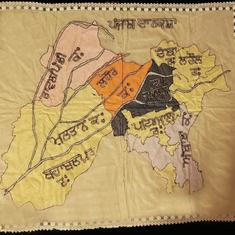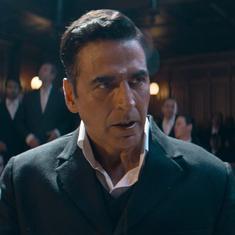In modern warfare, as nations grapple with a range of security threats, Special Forces have emerged as an invaluable instrument of state power. They are specially trained men and women who will, in all likelihood, always operate in secrecy, most of the time in foreign lands, moving towards complex military and political objectives.
The debate that ensued after the Myanmar raid, dubbed Operation Peace, failed to appreciate the nature of "special operations" and how they fit into a matrix of options that a state employs on such occasions.
The Theory of Special Operations
In 1995, a mid-career naval Captain in the United States was in the middle of finishing a thesis that would become the “go-to-book” for Special Forces units across the world. William "Bill" McRaven, a tall and strapping naval officer, a man with a quiet and measured demeanour about him, had been grappling with the need and efficacy of special operations for the better part of his career.
Only a small badge on his chest indicated that McRaven was a Navy SEAL – a member of the elite United States Navy’s Special Forces. Years later, as an Admiral, McRaven would plan and execute Operation Neptune Spear, the Navy SEAL Team 6 raid into Abbottabad in Pakistan to nab Al Qaeda’s funder Osama Bin Laden. Days after that operation, as details began to emerge about what had happened, people began to hear about McRaven. As an officer who had served with him said, “Bill McRaven is a man who has a back-up to a back-up to a back-up.”
McRaven’s thesis – Spec Ops: The Theory of Special Operations – is considered a seminal work to understand why a nation uses special operations to achieve political and military objectives. It was an in-depth study on the relevance of Special Forces in modern wars, and how their strategic role is a critical strategic asset for countries looking to fight wars far beyond their land borders. The wars of the future will no longer follow the same rules that have governed the conflicts of the past, he suggested. They will be fought under unconventional circumstances, in faraway lands, under great political risk and against an invisible enemy. While conventional wars were fought over territory, the new wars will be fought over ideology, where the gain or loss of territory means little to the key combatants. McRaven understood these dilemmas and began to research them during his stint at the Naval Post Graduate School in Monterey, California.
Researching several case studies, McRaven framed the core theory of special operations: “…through the use of certain principles of special operations, a small force can achieve relative superiority over the enemy”. As McRaven pointed out, Special Forces are in the risky business of conducting special operations that are aimed at a “specific target whose destruction, elimination…is a political or military imperative”.
Clearly, understanding both the objectives – political and military – is imperative for the success of the special operation. In the Myanmar raid, while the military objectives were clear and well executed, the political objectives, though clear, was poorly executed.
Lost in the wilderness
Modern-day military planners in India have rarely appreciated the need or the tasking of Special Forces. Despite its historical association with Special Forces and special operations, India’s generals have routinely failed to support and use Special Forces as they were originally intended to be used. This has cascaded into faulty advice to political leaders, often leading to tragic consequences.
This is unfortunate, considering that some of the finest special operations in modern warfare were first conceived and executed flawlessly in the subcontinent. Brigadier Orde Wingate, an officer considered either a mad or a genius by his peers, arrived in the summer of 1942 as British India was hastily preparing for a Japanese onslaught into India after suffering a string of humiliating losses in South East Asia. Wingate, fresh from the British mandate of Palestine, where he had successfully raised a Jewish militia to fight the Turks.
Wingate would lead nearly three brigades into Myanmar (Burma) and bring the planned Japanese assault into India to a grinding halt. But the operation and its legacy was forgotten and independent India’s military conveniently forgot the lessons from that war.
Early turbulence
Ironically, in 1994-'95, when Admiral McRaven was working on his book, the Indian Army was struggling to rise a Special Forces unit that would be dedicated to the North East. At that time, India had three dedicated army Special Forces units, each dedicated to a specific theatre. The first to be raised, in 1968-'69 – 9 Para (Special Forces) – was based out of Udhampur in Jammu and Kashmir, aimed at operating in the mountains. The 10 Para (Special Forces) was based out of Jodhpur with the mandate to operate in the deserts. In 1980, the Indian Army converted an existing Parachute battalion, 1 Para (Special Forces), to serve as “strategic reserve” for army headquarters. In 1994, General BC Joshi, the army chief at the time, began the work to raise a new Special Forces unit dedicated to the North East.
The man given the task for raising the unit was Lieutenant General Vijay Oberoi, the director general of military operations (DGMO, a rare officer who had lost a leg in battle early in his career, but rose to higher ranks despite his disability. “I wrote to all the regiments asking them to contribute a battalion for the conversion but no one came forward. Everyone wanted to avoid losing a battalion or lose their best officers and troops,” he said. So Oberoi decided to use his prerogative as the Colonel of the Maratha Regiment and donate the 21st battalion for conversion to a Special Forces role.
The decision was a tough one. Indian military generals rarely appreciated the need for Special Forces. For a normal infantry battalion, a conversion can be a traumatic experience. They are steeped in tradition, dependent on caste and ethnicity for recruiting their men and fight wars very differently. A Special Forces unit is a purely volunteer force, smaller in size, designed to conduct strategic operations in foreign countries, to be denied if they fail.
Unfortunately in India, this was a learning that had rarely been articulated in the higher echelons of the military hierarchy.
In the initial years, 21 Para (Special Forces) struggled to gain a foothold as it was tossed around from one sector to the other. Officers from other elite Special Forces’ units were brought in to stabilise the unit, but most generals failed to recognise the strategic importance of the unit. Colonel Ivan Crasto, a Special Forces’ officer, famous for rescuing tourists from a hanging cable car in Himachal Pradesh, was brought in to command the unit when it was stationed in Jorhat, Assam.
In six months the unit was transferred around nearly 18 times, leaving the men frustrated at the lack of clarity about their role. Colonel Crasto protested and subsequently resigned from the army as the unit lurched from one place to the other in search of a new role. In the Indian army, giving up legacy a century of legacy affects a unit on several levels. Legacy determines how soldiers will be recruited into the unit and how it will fight, as the traditions “paltan ki izzat” (Battalion’s Honour) is inculcated as the very basic tenet that motivates its men to go into battle.
India’s tradition-bound army generals preferred large formations that would be deployed in large areas and conduct conventional operations that caused large collateral damage to ordinary people trapped in conflict zones. This ensured that Indian Special Forces were always treated with disdain in most military circles and left to fend for themselves.
Operation Peace
The days prior to the launch of Operation Peace 1 and 2, the plan was to use the Indian Air Force’s Mi 17 V helicopters to insert the team into Myanmar. These helicopters are the only ones with night-flying capability and could have landed the raiding teams nearly 5 km short of their targets. Instead, the IAF expressed its inability to fly due to the prevailing weather and the teams were left to conduct the raid on foot. This meant that the men had to trudge through harsh terrain and thick foliage, carry heavy backpacks for over 12 kms to reach the insurgent camps. Clearly, getting back evidence of the “success of the raids” was the last thing on their mind. While there is a debate on how many casualties were caused by the raiding parties, it is conveniently forgotten that causing a high number of casualties was not the stated “political and military objectives” of the raid in the first place.
For the men and the officers of the Indian Army, losing their comrades in an ambush is an existential threat. For a military steeped in tradition, good and bad, any loss needs a quick, commensurate response. That, clearly, was the military objective. The political objective of planning such a raid was to signal intent and reach as well as assure the rank and file of the military that they would support any retaliatory strike. It did not matter that the National Socialist Council of Nagaland (Khaplang) camp that was hit by the second Special Forces’ team did not find anyone there. The fact remains that New Delhi had clearly signalled its intent to hit back.
Muddied messaging
The principles of special operations mandates that the messaging has to be measured to the intent. Any attempt to extract additional political benefits will usually end up with disastrous consequences. In this case, while the security establishment – the military, the Special Forces unit, the intelligence agencies and the political entities dealing with security issues delivered – those trusted with the messaging did a poor job of communicating a clear victory.
The crass and immature messaging to gain additional political brownie points jeopardised a well-crafted mission. Unless these crucial mistakes are admitted and corrected, India’s ability to use its Special Forces for strategic gains will continue remain tactical and limited. That would be a farce, repeated as a tragedy.
The author is a veteran journalist and the author of India’s Special Forces. His Twitter handle is @saikatd.










